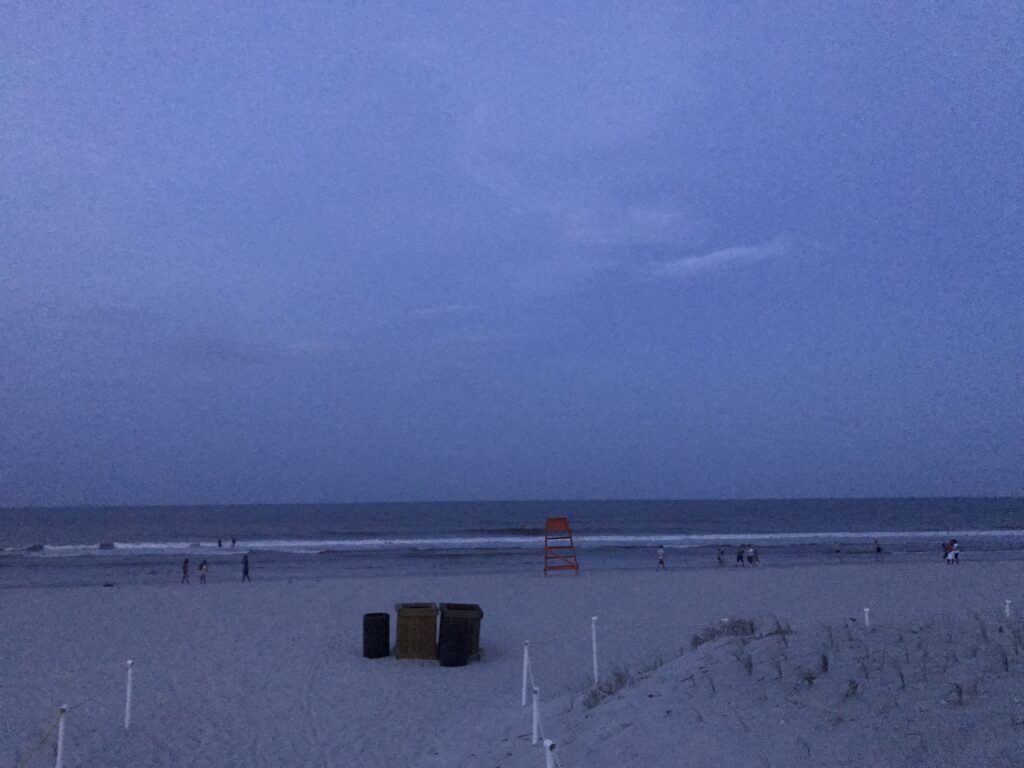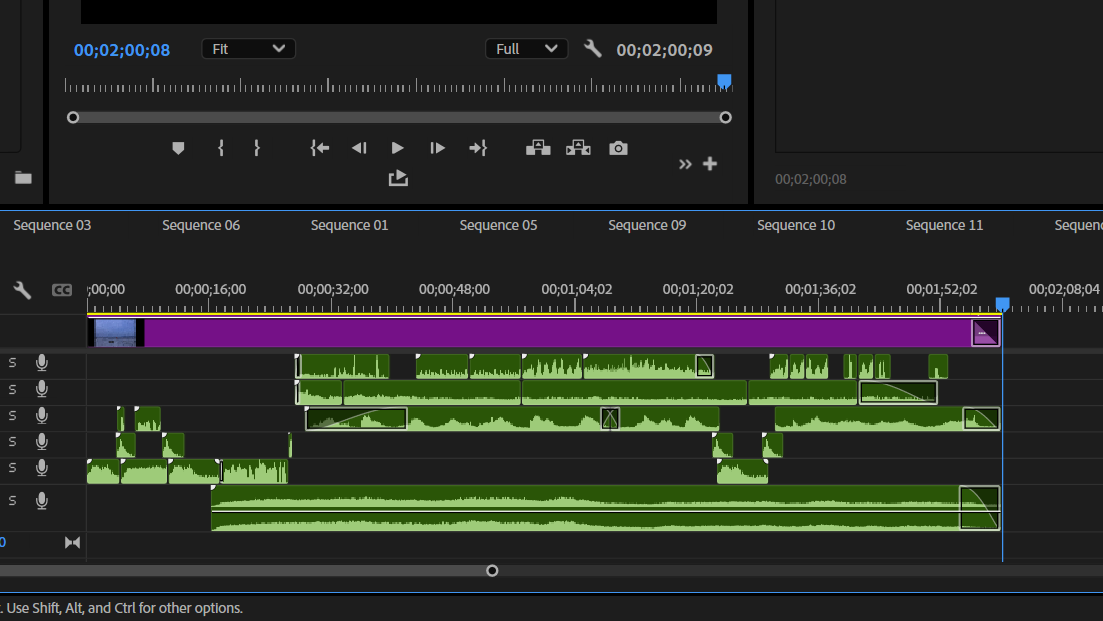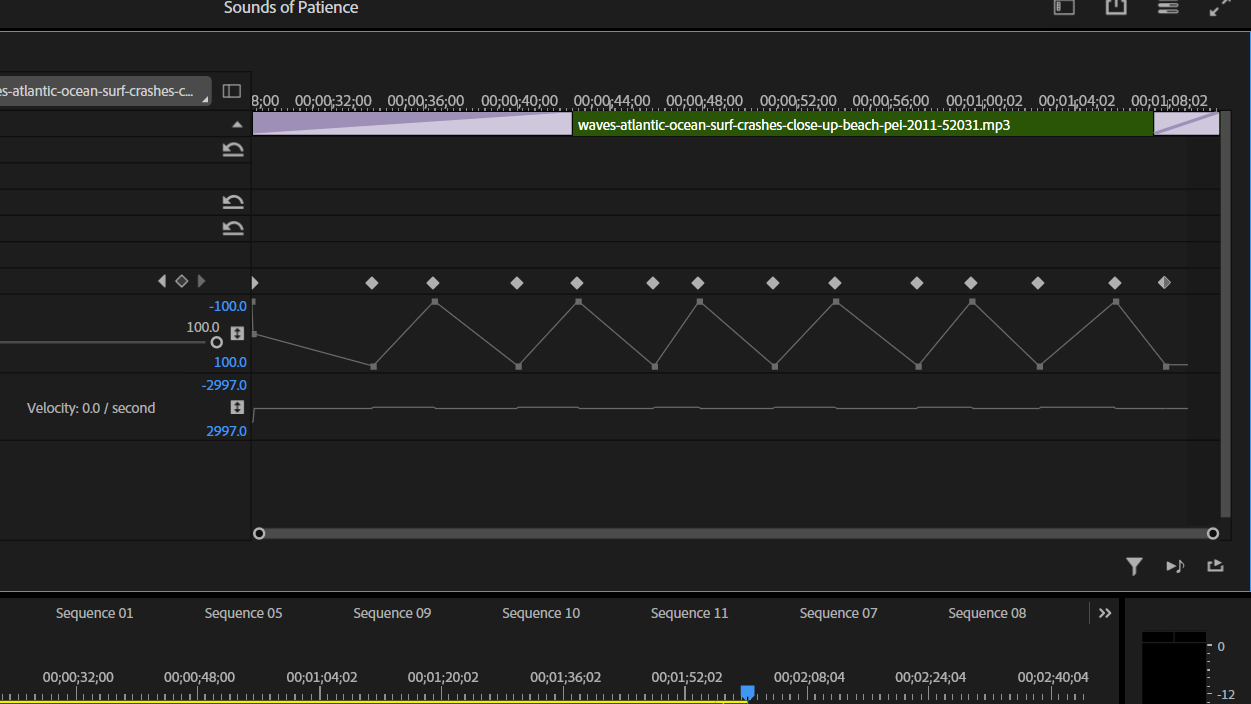Pressure Project 3: Surfing Soundwaves
Posted: April 11, 2025 Filed under: Uncategorized Leave a comment »When starting this project, it was a bit daunting and overwhelming to decide which part of my cultural heritage to explore. Theatre initially came to mind, but that felt too easy, I wanted to choose something that would allow me to share a new side of myself with my peers. With graduation on the horizon, I’ve been thinking a lot about home. I grew up near the water, and there’s this unbreakable need in me to be close to it. That’s where I began: sourcing sounds of the ocean on Pixabay. I went so specific as to only use sounds from the Atlantic Ocean when possible, even finding one clip from Florida.. But I realized that the ocean itself didn’t fully capture my heritage, it was a setting, not a story. I had to go deeper.
I began thinking about my dad, who was a professional surfer. I’m sure he had aspirations for me to follow a similar path. I felt a lot of pressure to surf as a kid, it was honestly terrifying. But over time, and on my own terms, I grew to love it. Now it’s how my dad and I connect. We sit out on the water together, talk, and when the waves come, we each ride one in, knowing we’ll meet back up. The more I thought about that ritual, the more homesick I felt. Even though the assignment was meant to be sound-based, I found myself needing a visual anchor. I dug through my camera roll and found a photo that captured the calmness and rhythm of beach life, something soft and personal that helped ground my process.

Once I had that anchor, I started refining the design itself. Since this was primarily a sonic piece, I spent about thirty minutes watching first-person surfing videos. It was a surprisingly helpful strategy for identifying key sounds I usually overlook. From that research, I pinpointed four essential moments: walking on sand, stepping into water, submerging, and the subtle fade of the beach as you move away from it. While wave sounds and paddling were expected, those smaller, transitional sounds became crucial to conveying movement and environment.
I then spent another chunk of time combing through Pixabay and ended up selecting sixteen different sounds to track the journey from the car to the ocean. But as I started laying them out, it became clear that I wasn’t telling a story yet, I was just building an immersive environment.

Avoiding that realization for a while, I focused instead on the technical side. I mapped out a soundscape where the waves panned from right to left, putting the listener in the middle of the ocean. I also created a longform panning effect for the beach crowd, which built up as you walk from the parking lot but slowly faded once you were in the water. I was proud of how the spatial relationships evolved, but I knew something was still missing.

Late in the process, I returned to the idea of my dad. I created an opening sequence with a sound of submerging followed by a child gasping for air. I used a kid’s breath to imply inexperience, maybe fear. To mark a shift in time, I recorded a voicemail similar to the kinds of messages my dad and I send each other, with the general sentiment“I’ll see you in the water.” It was meant to signal growth, like the child in the beginning was now the adult. I had hoped to use my actual dad’s voicemail, but when I called him, I found his box wasn’t set up.
I decided to end the piece with the paddling slowing down and the waves settling as I/the character reached dad. I repeated “dad” a couple of times—not in panic, just to get his attention, to make it clear he was present and alive. I used very little dialogue overall, letting the sound do most of the storytelling, but I tried to be economical with the few words I did include.
During the presentation, I felt confident in the immersive quality of the work, but I wasn’t prepared for how the tone might be read. The feedback I received was incredibly insightful. While the environment came through clearly, the emotional tone felt ambiguous. Several people thought the piece might be about someone who had passed away, either the child or the father. I had added a soft, ethereal track underneath the ocean to evoke memory, but that layer created a blurred, melancholic vibe. One person brought up the odd urgency in the paddling sounds, which I completely agreed with. I had tried to make my own paddling sounds in my kitchen sink, but they didn’t sound believable, so I settled on a track from Pixabay.
Looking back, I know I missed the mark slightly with this piece. It’s hard to convey the feeling of home when you’re far from it, and I got caught up in the sonic texture at the expense of a clearer narrative. That said, I still stand by the story. It’s true to me. When I shared it with my wife, she immediately recognized the voicemail moment and said, “I’ve heard those exact messages before, so that makes sense.”
If I had more time, I would revisit the paddling and find a better way to include my dad’s voice, either through an actual message or a recorded conversation. That addition alone might have clarified the tone and ensured that people knew this was a story about connection, not loss.